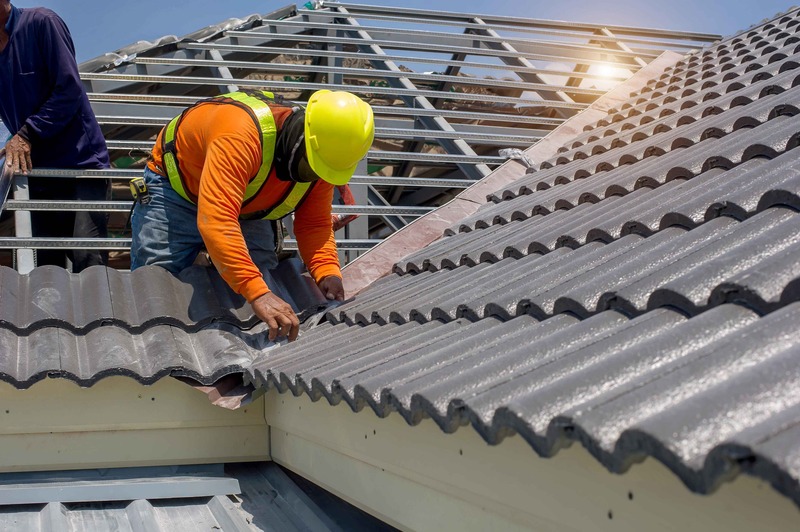Typical Roof Replacement Prices in the UK: Defending Your Dwelling from the Elements
Typical Roof Replacement Prices in the UK: Defending Your Dwelling from the Elements
Blog Article
Roof replacement is an expensive undertaking that can be a big job for homeowners in the UK. It is one of the more important tasks in home maintenance, since the roof acts as a barrier to the outside elements. With the UK's unpredictable weather - including heavy rainfall, strong winds, and occasional snow - roofs are exposed to constant stress, making regular upkeep essential. Roofs naturally degrade over time and may require more than repairs to keep them structurally sound. When leaks become frequent, tiles start to fall, or insulation becomes ineffective, it's usually a sign that a full replacement is needed. Ignoring these warning signs can lead to costly damage inside the home, including mould, rot, and electrical issues. A new roof not only enhances the appearance of a property but also increases its value and energy efficiency.
In the UK, most roofs are made with slate, tile, or felt, each with its own lifespan and maintenance needs. Slate roofs, common in older homes, can last up to 100 years but may begin to degrade after several decades if not properly maintained. Also widely used are clay and concrete tiles, which offer a 40-60 year durability. Felt roofs, often seen on flat roofs, generally need replacement after 20 to 30 years. Homeowners should also consider factors such as roof pitch, underlay condition, and ventilation when evaluating roof health. Roof inspections by certified roofers can confirm whether repairs are required or not. Early signs of damage can be detected by regular inspections, which will help you avoid more costly repairs later.
Replacing a roof in the UK involves careful planning, especially when it comes to selecting materials that comply with local building regulations and weather requirements. For example, listed buildings or homes in conservation areas may require specific types of tiles or slates that match the original aesthetic. Beyond aesthetics, the materials must also withstand regional climate conditions, particularly in areas prone to heavy rainfall or strong winds. Many homeowners choose slate or tiles because of their classic look and durability. However, modern options such as composite and synthetic tiles have gained popularity due to their energy-efficient design and lightweight construction. Roof replacement is a great opportunity to increase insulation, ventilation and reduce energy costs. A good contractor will take all these factors into account and offer guidance on the best solution for each home.
The process of Typical roof replacement prices in the UK begins with a thorough inspection by a professional roofing contractor. Contractors will determine if a complete replacement or repairs are needed after assessing the extent of damage. If a replacement is required, the old roofing materials are carefully removed, and the decking beneath the roof is inspected for any damage. In some cases, the underlying structure may need repair before the new roof is installed. Once the structure is secure, the new roofing materials are installed. This process can take several days, depending on the size of the roof and the complexity of the job. You should hire an experienced contractor with experience in the type of roofing you have. Different materials and designs will require different methods. To receive extra information please look at https://www.roofadvisor.co.uk/how-much-does-a-roof-replacement-cost-in-the-uk/
Timing the project correctly can make a significant difference in the ease and success of a roof replacement. The best times to do such work in the UK are during late spring, early summer or early fall when weather conditions tend to be more stable. Rain and wind can cause delays or complications, especially if large areas of the roof are exposed during construction. However, emergency replacements may be required at any time of year, particularly if a roof has suffered storm damage. Planning ahead and booking a contractor in advance can help avoid long wait times during peak seasons. Homeowners should also make logistical preparations, such as informing neighbours about upcoming work, arranging parking space for construction vehicles, and preparing for potential noise and disruption. A realistic schedule and clear communication will help you manage the process with minimum inconvenience.
Roof replacement in the UK is an essential part of long-term home maintenance and should not be delayed once signs of significant wear appear. A well-installed new roof protects against harsh weather, improves insulation, and boosts property value. Homeowners can customize their roof according to aesthetic preferences as well as practical requirements. The cost may be high, but the benefits over time - such as energy savings, structural stability, and peace-of-mind - are worth it. A successful roof replacement requires careful planning, the best contractor and making informed decisions. For UK homeowners looking to protect their homes for decades to come, replacing an ageing roof is one of the smartest improvements they can make.